The Egotist & Ad Club Interview Tiffany Rolfe, Partner/Chief Creative Officer, Co:Collective (make that, CCO @ R/GA)
By The Denver Egotist / /
A relentless avalanche of energy. A constant erupting volcano of atomic hot ideas. A willingness to dive into the trenches with her troops. Tiffany Rolfe is all of these things and more. The longtime Crispin, Porter + Bogusky alum thrived during a critical run in the agency’s creative surge until going Big Apple and taking the creative helm at Co:Collective. There, she evolved the well-known art of Storytelling into Storydoing — a creative process she will divulge at Ad Club’s Speaker Series, Thursday, October 25 at 6pm in Boulder. Sign up now for this limited engagement. This will be a good one.
— — — — — — — — — —
Let’s first climb aboard the time machine and reminisce about your days designing sites for Disney, Pixar and Sony. What were those early days like as a creative working for Hollywood’s finest?
I started working on movie websites in LA straight out of high school pretty much. 1995-2002. It was the Wild West. There were no rules online and no one was even seeing most of the stuff I made. That gave us a lot of freedom to come up with our own ways of interpreting the movies, writing for characters. Pretty much entirely going off brand and breaking the rules of marketing because no one knew enough about the Internet. Which was really fun. It was an exciting time learning about new technologies and finding a way into Hollywood without going through the traditional paths. I presented to Steve Jobs when I was 20 years old. And I still remember the idea I presented. He didn’t like it. But it was a good idea. Just not right for how he likes to market. It was too clever. Basically just show the product. Much of how his famous apple advertising did.
You’re the flat out definition of perfect timing. You came into the Crispin fold just as the agency started to really revolutionize not just the agency but the whole industry. Mini, Truth, Virgin Airlines, IKEA. So many stories. Tell us about those days.
Yeah, I mean it may have been blind luck, but I will take a bit of credit for choosing CP+B as my first choice. My next interview connection lined up was at Wieden, so I’d set a high bar. But there was something about Crispin that attracted me. It was still on the small side but was doing interesting “guerrilla advertising” ideas. They had just started on MINI and Ikea. I remember thinking I was maybe starting there too late, like I’d missed their heyday. Umm, I didn’t.
I think we did have a leader and culture that had a very clear purpose. Everything was in service of work that makes clients famous in the world, that taps into a vein in culture. Work that was designed to be written about. And that clear vision of what we woke up (or stayed up) doing kept us very focused. Everything was in service of that. Getting that many people across every department and clients for that matter in service of that vision meant we were able to sell and make some great work. But it wasn’t just creative or strategy, it was EVERYONE. We were all part of this big machine that could make this vision real in the world for clients. And they believed in it. It’s hard to recreate that without all of those pieces in place. It was pretty amazing and I’m appreciative I was a part of it. It helped make me who I am. But there were for sure a lot of sacrifices for people.
In the long run, it wasn’t sustainable. I think cultures today can’t achieve success in that same way. The challenge today is to create a culture of innovation and breakthrough thinking, while still allowing people to have fulfilled personal lives and families.
Your success led to you being named the first female CD in the agency, helming the Old Navy account you just pitched and won. What were the plusses and minuses during your run?
I think I’d become CD before that. I had pitched American Express OPEN and won it, and Hulu. And I’d been CD on truth. I also ran some Microsoft for a while, as well. But Old Navy was for sure a long run.
It was amazing, and exhausting. It was all in service of great work. I did a lot of the best work of my career. The pace and output was astonishing. I loved it, and learned so much, but there was also a lot I didn’t learn. I’ve since learned more about managing people and their careers as well as developing great work.
Last Crispin question: what was your all-time favorite project there, art director or creative director?
I have about 5 for all different reasons, but if I had to just pick one, I’d say these two. Sorry, couldn’t just pick one.
Truth — for what it did for society, and getting me into Heaven.
AmEx OPEN Forum and the work beyond that. Really developing a community of small business owners through a real platform of support.
I had great people working with me. I had no idea how great, even. And one of my leads now, Courtney Bowditch, was someone from CP+B who worked on my team years ago.
Flipping the switch to your shop of six-plus years, Co:Collective, you’ve piloted a business model for your clients code-named Storydoing®. (Yes, it’s even copyrighted). Give us a taste of how this differs from the more common Storytelling.
We believe story is best expressed through actions. It’s sort of common sense at its core. You can’t say something, but then do another. We expect the same from people. At their core, the best brands are very authentic to their story across their entire customer experience, inside their organizations. And we found that often those brands didn’t have to spend as much just “telling” their story, when people felt it through every touchpoint. It works harder for them. It’s believable. I think in the past companies could advertise a message, but perhaps their products and their organization maybe have not matched up to the message they put out there. Today, we live in a world where everyone can publish their experiences of brands (maybe at odds with their marketing) and find out anything they need to know about a brand. So it’s even more critical that they walk the walk.
So we tend to help brands define a story that goes deeper than their advertising. It’s a part of it, but their story has the opportunity, and actually the necessity, to go deeper. It should help inform and guide the products they make, their company culture, the way they show up in the world.
This philosophy you’ll be sharing in Boulder states that the most powerful ideas are more collaborative and less yours. If you’re a young creative scratching and clawing to make a name for yourself, how do you convince that person to relinquish ownership?
The biggest and most powerful ideas today are the ones that are more open. Ideally, there is something for people to take and make their own and share to represent their beliefs and identity.
I think it comes down to the impact you want to make on the world. And the ideas that become adopted and owned by more people will have the widest and greater impact. The ultimate being an idea that has become by culture.
Credit is a funny thing. I still believe great creative work should be celebrated and awarded to inspire us all. But great creative work today can only get made through much deeper collaboration with clients and across disciplines and other agencies. So I believe we need to evolve the proprietary idea culture.
The attribution today looks far more like a movie credits list, than a solo creative team. And this doesn’t mean creatives are less significant. I believe the opposite. Creative and purposeful brand stories have become even more important. They can drive cohesion and vision across the brand’s entire business, beyond just marketing.
With a roster sporting prized, yet established names Google, YouTube, Pepsico, Timberland, Microsoft, do you find it’s easier or harder for clients to take that leap of faith to instigate change inside and outside their corporations?
I think deeper change is something we are seeing clients have to do, or they will die. But we are seeing a lot of the change needs to start from within and that can take a while and you need the right leaders in place to make that change happen. In some ways, it feels like clients are making less (advertising, for instance), but I think they are actually having to make much more with less money, and make harder choices, across way more channels, and across their entire customer journey.
You’ve owned titles of both Chief Content Officer and Chief Creative Officer at Co:Collective. Describe the subtle nuances between those roles.
I’m actually Chief Creative Officer now. I started as Chief Content Officer based on how we’d organized our teams at co. But content has become more specific. I go back and forth with it. I think it’s important today to remind ourselves that we can lose creativity in this business. It’s what can help us continue to inspire and truly connect with people. But I don’t believe I should be the owner of “creativity.” I think all of our jobs in this business need to believe part of their job is thinking creatively.
Straight Up is an organization founded by you and about 18 other powerful women advertising to see more advertising women in more positions of power — and big-time bravo for this. What kind of initiatives or programs do you spark to keep the momentum gathering speed?
Yes, Straight Up was an organization that I founded with a group of female leaders a few years ago to help women become leaders in the business. But I think you are probably referring to Times Up Advertising. Times Up was initially founded in Hollywood to combat sexual harassment in Hollywood. A group of women in advertising had come together to help tackle that issue and others, in advertising. And, yes, was one of the early signatories as we partnered with Times UP to help the movement gain more momentum and support in our industry.
Good to know. On that note, what advice can you dole out to the working ad moms — like yourself — mining for ways to strike that often elusive balance between home and career?
There’s never really balance. You just find your boundaries. There are things I draw a line in the sand for when it comes to my kids. And to a certain degree vice versa. I’m never going to be the one working the bake sale on a Tuesday. But for instance, I designed the best preschool yearbook they’d ever seen. So you pick the things that play into your strengths, and you try to not beat yourself up that you can’t do it all. In the end, my daughter sees I like doing what I’m doing, but that I also make time to be there for her. And hopefully, she’ll come to admire having a mom who is passionate about her work.
Thanks for coming back. This will be a homecoming of sorts as you did experience the Boulder office of CP+B for a spell. Any general thoughts as you come out to see us?
CP+B will always feel like home to me. But it will be weird not knowing anyone but a few people. I wish I’d left my handprints in the concrete or something. I’m looking forward to the next chapter though, with Alex back. If anyone can find a new inspiring direction for CP+B, it’s him. And I look forward to him continuing the legacy that I’ll always be a part of.
— — — — — — — — — —
UPDATE: Congratulations go out today to Tiffany who has accepted a new role as U.S. chief creative officer at R/GA. She begins the new endeavor in early December.
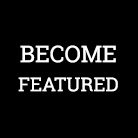

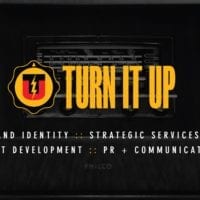
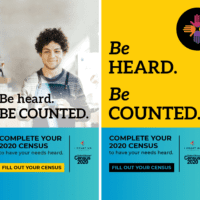
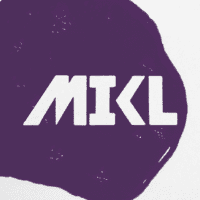
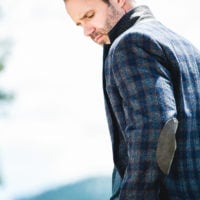
Comments